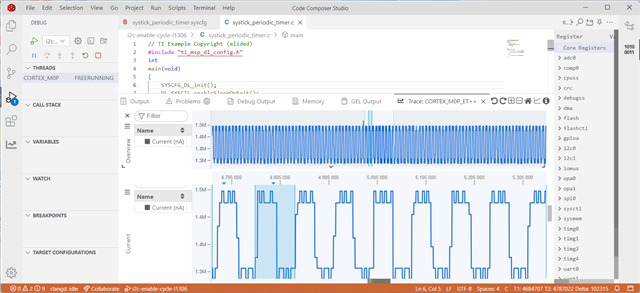Other Parts Discussed in Thread: LP-MSPM0L1306, ENERGYTRACE, MSPM0L1306
Tool/software:
I could not find any documentation on the current consumption burden of keeping the I2C configured while we are trying to keep compliant to the specification of 1uA of standby current.
It is critically important that we understand if there is any additional current consumption from keeping the I2C active, perhaps a better word is "configured" during the low power RTC standby.
Within this question, the I2C (pins 4 & 5 of the 1345), would not be communicating or connected to a "mother" device. It would and should have ESD protection on those IOs of course. Any suggestion on preferred devices or configuration of ESD protection would be most appreciated.
The pullup resistors would reside on the mother device.
Once connected to the mother device, the processor would be alerted via interrupt configuration presumably.
THANK YOU


